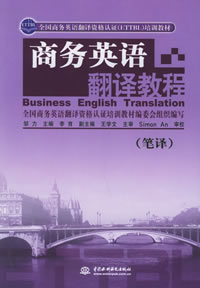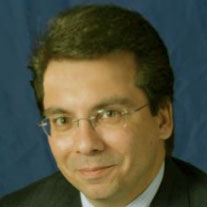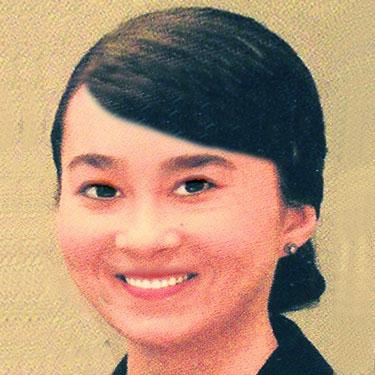职业翻译与有效的知识转化 (I)
作者:古龙 2009-07-04




语际翻译公司 转载请注明https://www.scientrans.com
∗本栏目部分文章内容来自互联网,部分已经过本站编辑和整理,如有版权事宜请联系Email/MSN jesczhao@hotmail.com
5. A translator must be committed and disciplined. The translation task commissioned to him or her must be completed by the deadline given so that the information that is translated does not become outdated and the user of the translation is properly served.
6. A good translator must be aware of the culture of both the source and target language readers. In this way, he or she will be able to translate to the target language based on the culture of the target readers and thus facilitate the reading and understanding of the translated text by the target readers.
7. An effective translator must learn to divide the workload among his colleagues who are subject specialists when translating voluminous academic books or long documents in the field of science and technology so that the process of translation can be speeded up and thus the readers are updated with the latest in these fields.
8. An effective translator should have all the necessary translation tools such as monolingual, bilingual and subject dictionaries, thesauri, terminology lists, a computer, a printer etc. available while translating so that no time is wasted searching for them while translating.
9. A translator must be aware of the whole translation process so that he or she will be able to translate quickly, accurately, clearly and naturally to the target language. Robinson (1997:49) has proposed that the translator is a learner and he suggests that "translation is an intelligent activity involving complex processes of conscious and unconscious learning." The researcher agrees with his proposal and also with the statement that translation is basically a problem-solving task. Robinson (1997:51) suggests that "translation is an intelligent activity, requiring creative problem-solving in novel, textual, social, and cultural conditions." A translator should know that translation is a learning activity and it involves the use of the main direct (memory, cognitive and compensation) and indirect (metacognitive, affective and social) language-learning strategies proposed by Oxford (1990). A translator who uses these strategies will be able to perform a good translation.
10. An effective translator must be aware that writing and translating involve similar features. The writing stages involve determining the message content (what?) and general purpose of the message (why?), defining the recipients (who?) and function (expected reaction of the recipients), planning the amount and order of content (What is assumed) and the realisation (what is expressed linguistically and what by some other means). The preparatory phase for writing involves the choice of text type (letter, novel, literary, non-literary, expository, informative, argumentative etc.). Here the writer must consider the format, publication, circulation, presentation involving the questions—where?, when? how? and the writer also must consider the alternative modes of communication. In addition to considering the above, the writer, according to Sager (1994:186), also must determine the structure, division of the written material into chapters, headings and paragraphs. This will lead to the message production. Sager (1994:186) suggests that the writer must evaluate, revise, modify and finally present his written work for publication. Like writing, translating too involves these stages—identification of the SL document, identification of intention, interpretation of specification and cursory reading and choice of TL text type and the other preparatory activities as in writing and original work. The researcher agrees with Sager's (1994) suggestion that writing and translation share similar features. In fact, the researcher is of the opinion that of the four skills in language learning, writing seems to come closest to translation. The researcher also agrees with Smith-Worthington and Jefferson (2005:80) in that the process of writing involves planning (prewriting, shaping, researching), drafting, revising and copy-editing (proofreading and publishing). She also agrees with Smith-Worthington and Jefferson's (2005:84) suggestion that the three features of writing are as follows:
a. Writing is recursive or circular in nature—it is a backward and forward process. The recursive nature means that the thinking process sometimes circles back to earlier stages.
b. Writing takes time—time is needed for ideas to emerge and develop. Different stages have their own activ
- 评论
- seme:文章内容文章内容文章内容文章内容文章内容文章内容文章内容文章内容文章内容 章内容文章内容文章内容文章内容文章内容
- seme:文章内容文章内容文章内容文章内容文章内容文章内容文章内容文章内容文章内容 章内容文章内容文章内容文章内容文章内容

- 谈翻译观念的嬗变与翻译技能的训练
2009-6-15 15:33:10 - 《高等学校英语专业英语教学大纲》中规定,大学生通过四年的在校学习,“能运用翻译的理论和技巧,将英美报刊上的文章以及文学原著译成汉语,或将我国报刊、杂志上的文章和一般文学作品译成英语……。译文要求忠实...
- 翻译与网络营销
2009-6-11 0:02:31 - Translation and Your International E-Commerce Strategy Most businesses realize that they ...
- 第四届IEEE生物信息与生…
2009-6-30 19:42:01 - 基本信息 主办单位: 四川大学,IEEE生物医学工程协会(EMBS) 承办单位 开始日期 2010/06/18 结束日期 截稿日期 2009/1...
- 第九届全国光电技术学术…
2009-6-30 19:35:58 - 基本信息主办单位: 中国宇航学会光电技术专业委员会承办单位 开始日期 2009/11/01结束日期 截稿日期 2009...
















